Yash Mehta
NAS-Bench-Suite: NAS Evaluation is (Now) Surprisingly Easy
Feb 11, 2022
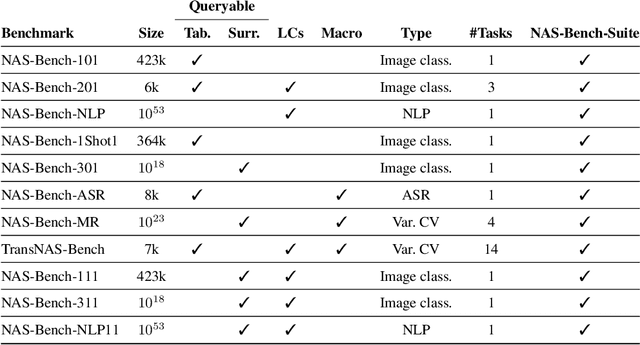


Abstract:The release of tabular benchmarks, such as NAS-Bench-101 and NAS-Bench-201, has significantly lowered the computational overhead for conducting scientific research in neural architecture search (NAS). Although they have been widely adopted and used to tune real-world NAS algorithms, these benchmarks are limited to small search spaces and focus solely on image classification. Recently, several new NAS benchmarks have been introduced that cover significantly larger search spaces over a wide range of tasks, including object detection, speech recognition, and natural language processing. However, substantial differences among these NAS benchmarks have so far prevented their widespread adoption, limiting researchers to using just a few benchmarks. In this work, we present an in-depth analysis of popular NAS algorithms and performance prediction methods across 25 different combinations of search spaces and datasets, finding that many conclusions drawn from a few NAS benchmarks do not generalize to other benchmarks. To help remedy this problem, we introduce NAS-Bench-Suite, a comprehensive and extensible collection of NAS benchmarks, accessible through a unified interface, created with the aim to facilitate reproducible, generalizable, and rapid NAS research. Our code is available at https://github.com/automl/naslib.
Towards Biologically Plausible Convolutional Networks
Jun 22, 2021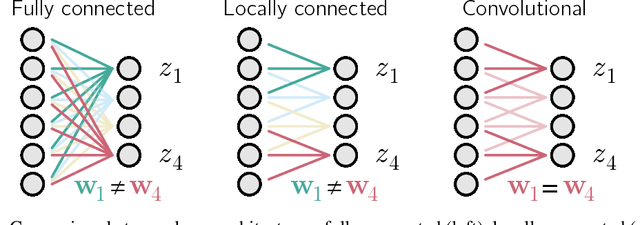

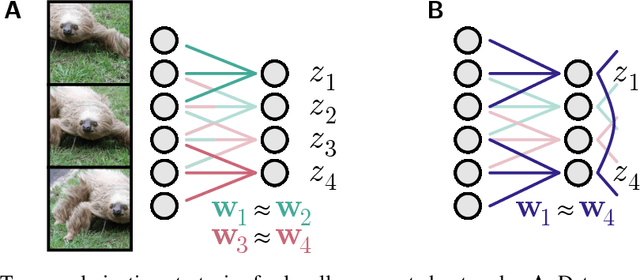

Abstract:Convolutional networks are ubiquitous in deep learning. They are particularly useful for images, as they reduce the number of parameters, reduce training time, and increase accuracy. However, as a model of the brain they are seriously problematic, since they require weight sharing - something real neurons simply cannot do. Consequently, while neurons in the brain can be locally connected (one of the features of convolutional networks), they cannot be convolutional. Locally connected but non-convolutional networks, however, significantly underperform convolutional ones. This is troublesome for studies that use convolutional networks to explain activity in the visual system. Here we study plausible alternatives to weight sharing that aim at the same regularization principle, which is to make each neuron within a pool react similarly to identical inputs. The most natural way to do that is by showing the network multiple translations of the same image, akin to saccades in animal vision. However, this approach requires many translations, and doesn't remove the performance gap. We propose instead to add lateral connectivity to a locally connected network, and allow learning via Hebbian plasticity. This requires the network to pause occasionally for a sleep-like phase of "weight sharing". This method enables locally connected networks to achieve nearly convolutional performance on ImageNet, thus supporting convolutional networks as a model of the visual stream.
Multitask Learning for Emotion and Personality Detection
Jan 07, 2021



Abstract:In recent years, deep learning-based automated personality trait detection has received a lot of attention, especially now, due to the massive digital footprints of an individual. Moreover, many researchers have demonstrated that there is a strong link between personality traits and emotions. In this paper, we build on the known correlation between personality traits and emotional behaviors, and propose a novel multitask learning framework, SoGMTL that simultaneously predicts both of them. We also empirically evaluate and discuss different information-sharing mechanisms between the two tasks. To ensure the high quality of the learning process, we adopt a MAML-like framework for model optimization. Our more computationally efficient CNN-based multitask model achieves the state-of-the-art performance across multiple famous personality and emotion datasets, even outperforming Language Model based models.
Personality Trait Detection Using Bagged SVM over BERT Word Embedding Ensembles
Oct 03, 2020
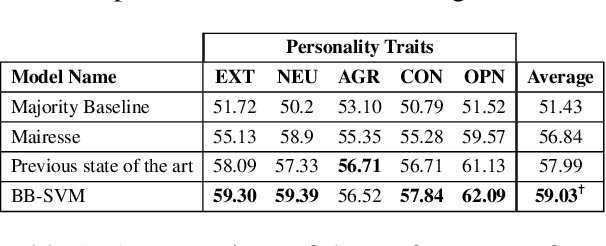

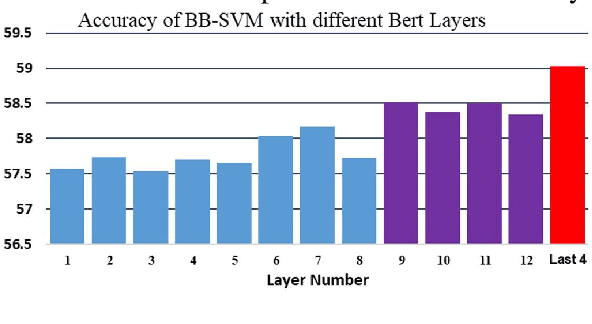
Abstract:Recently, the automatic prediction of personality traits has received increasing attention and has emerged as a hot topic within the field of affective computing. In this work, we present a novel deep learning-based approach for automated personality detection from text. We leverage state of the art advances in natural language understanding, namely the BERT language model to extract contextualized word embeddings from textual data for automated author personality detection. Our primary goal is to develop a computationally efficient, high-performance personality prediction model which can be easily used by a large number of people without access to huge computation resources. Our extensive experiments with this ideology in mind, led us to develop a novel model which feeds contextualized embeddings along with psycholinguistic features toa Bagged-SVM classifier for personality trait prediction. Our model outperforms the previous state of the art by 1.04% and, at the same time is significantly more computationally efficient to train. We report our results on the famous gold standard Essays dataset for personality detection.
Recent Trends in Deep Learning Based Personality Detection
Aug 27, 2019



Abstract:Recently, the automatic prediction of personality traits has received a lot of attention. Specifically, personality trait prediction from multimodal data has emerged as a hot topic within the field of affective computing. In this paper, we review significant machine learning models which have been employed for personality detection, with an emphasis on deep learning-based methods. This review paper provides an overview of the most popular approaches to automated personality detection, various computational datasets, its industrial applications, and state-of-the-art machine learning models for personality detection with specific focus on multimodal approaches. Personality detection is a very broad and diverse topic: this survey only focuses on computational approaches and leaves out psychological studies on personality detection.
 Add to Chrome
Add to Chrome Add to Firefox
Add to Firefox Add to Edge
Add to Edge